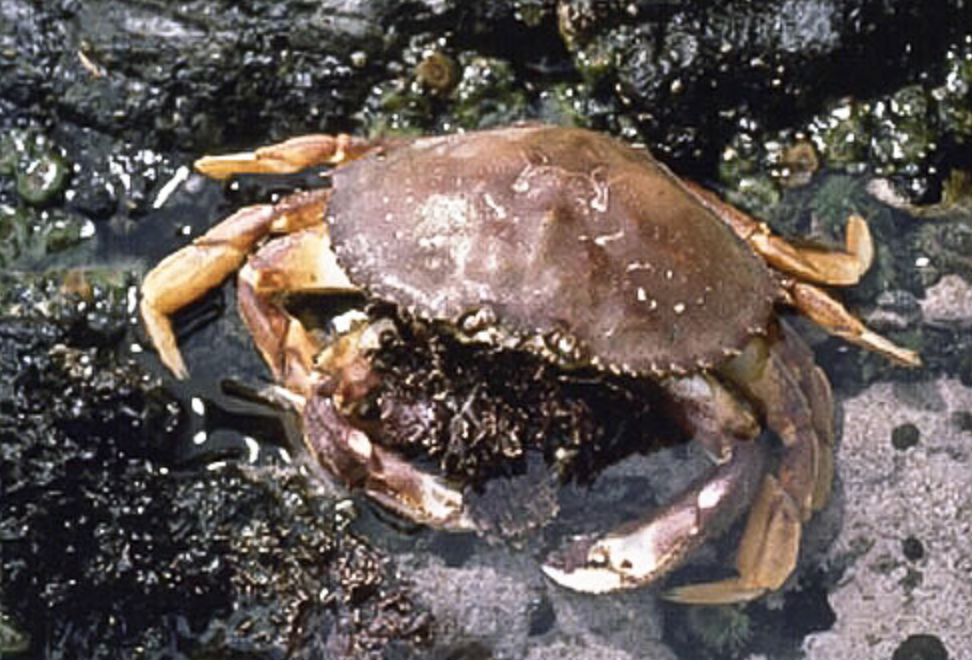The North Pacific marine heat wave of 2014 to 2016 and subsequent algae bloom severely tested California fishing communities dependent on Dungeness crab – and demonstrated how they could adapt to sudden climate changes, according to a new study by West Coast scientists.
The bloom produced high levels of the biotoxin domoic acid, forcing a delay in the 2015-2016 crab season when “roughly two-thirds of all vessels stopped fishing temporarily while others switched to different fisheries or moved to more favorable locations,” according to a summary from Oregon State University, where researchers worked with colleagues at the University of Washington and the National Oceanic and Atmospheric Administration’s Northwest Fisheries Science Center.
The study used network analysis to examine impacts from the season delays across fisheries, and understand how seven affected fishing communities responded, according to James Watson, one of the study’s co-authors and an assistant professor at OSU’s College of Earth, Ocean, and Atmospheric Sciences.
Those findings are important because the fishing industry will likely face new tests in years to come from more “climate shock events,” according to Watson.
“This work is really about understanding how fishing communities can adapt to climate change,” he said. “We found that West Coast fisheries are highly adaptive. Generally, they can take a hit and bounce back, though some communities are more resilient than others.”
The paper, “Climate shock effects and mediation in fisheries,” is published in the Jan. 12 issue of the Proceedings of the National Academy of Sciences. Lead author Mary C. Fisher began the study as a research scientist at the Northwest Fisheries Science Center and is now a doctoral student at the University of Washington. Fisher was supported by a National Science Foundation Graduate Research Internship fellowship. Additional co-authors are Stephanie Moore and Jamael Samhouri of NOAA’s Northwest Fisheries Science Center and Sunny Jardine of the University of Washington.
The heat wave’s long-term effects on the Dungeness crab fishery were particularly acute for West Coast ports, where crabbing accounts is for about 26 percent of all fishery revenue in California and supports more than a quarter of all commercial fishing vessels, the authors wrote.
The researchers studied the impacts of the marine heat wave and algal bloom on more than 2,500 fishing vessels across seven fishing California from Crescent City to Morro Bay.
“We wanted to examine the extent to which the Dungeness crab fishery delays affected participation in other fisheries and the duration of those changes,” Fisher said.
The researchers found that 71 percent of the California Dungeness crab fishing vessels stopped fishing all together during the season delay. The remainder either moved to locations unaffected by the delay or switched to other types of fishing. Larger vessels fared better during the closures because they were able to more easily travel to new locations.
Fisheries in Central California were more resilient to the closure in part because they had shorter delays and were generally less dependent on Dungeness crab. The fishermen in those communities were typically more flexible in how they fished prior to the 2015-16 season, giving them more options during the closure period.
The reliance of northern California fishermen on lucrative Dungeness is potentially what Watson called “a gilded trap” when it is harder for them to adapt when necessary to other fisheries. The delayed 2015-2016 season reduced the average catch to around 52 percent of the average over the previous five years, according to the paper.
“The researchers did not observe any significant, lasting changes to the Dungeness crab fishing community after the closures were lifted, suggesting that fishing community may mostly return to ‘normal’ fishing practices relatively quickly after a short-term disturbance such as a climate shock,” according to the OSU summary.
The most resilient fishermen are able to “leverage strong networks of contacts in different fisheries and have the skills and equipment to fish for different species,” according to Watson.
“What we don’t know is if there is a tipping point, at which fishing communities can no longer adapt or bounce back,” Watson said. “If they get hit again and again, at what point do they permanently change or leave the industry?”







